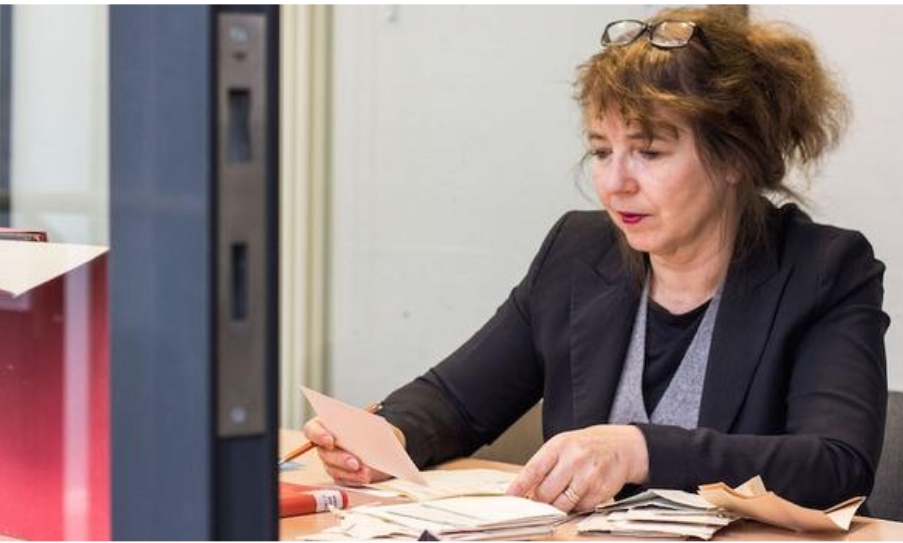Culled from Pretoria News/
THERE’S a place in Germany where every day is Valentine’s Day: the love letter archives at Koblenz University. The oldest one dates to 1836. A glimpse at them offers a chance to compare the language of handwritten notes like “revered, gracious young lady” to today’s social media posts.
“Hello bunny rabbit,” “My dearest,” “Lovely little bear,” “Hi Darling.” Yesterday, Valentine’s Day, written expressions of love and affection were very much in mode.
Eva Wyss, the woman who heads the love letter archives at Koblenz University and who knows a lot about the sentimental side of Germans, observes how “couples now are posting on Facebook a great deal to display their bond”.
“With these new love letter formats people can show their friends that they are cultivating their relationship,” she says.
The university archive has around 17 000 letters, cards, and SMS and e-mail messages. WhatsApp messages are collected separately. “Our oldest love letter dates back to the year 1836,” says Wyss, who is a professor of linguistics.
Valentine’s Day is likely the day with the most love declarations posted on the internet, she says.
In the handwritten love letters in the collection that was begun 21 years ago, Valentine’s Day was only rarely was mentioned. “The celebration of Valentine’s Day is a new development here in Germany.”
In this age of digital love messages, the texts are becoming shorter, but the pictures more important. Photos, symbolic images and greeting cards show that “the picture no longer underscores the text, but the opposite is often the case,” Wyss says. “Emojis illustrate how we’re feeling. They are part of the internet code.”
A typical trait of online communications by couples is the mixture of romantic declarations with everyday matters like shopping lists.
On Valentine’s Day last year, for example, a young woman posted on Facebook: “Fond greetings my darling, you can do it, lots of luck for your remaining exams!” This was followed by a red heart and red rose icon. The answer: “Thanks sweetie” followed by a kissing-lips icon.
“Darling” or the diminutive forms of “sweetie” or “honey” are the terms of affection found most in German love letters. This was already true in the 19th century, notes Darmstadt Polytechnical University linguistics professor Andrea Rapp, who has joined Wyss in the research.
For a century now, couples in love have called each other “bunny,” “bear,” or simply “dearest.” The terms are gender-neutral, being equally applied to both male and female recipients.
The old-fashioned handwritten love letter has become rarer, Rapp says, but in times of long-distance relationships, they have not died out completely.
But irrespective of whether on paper or on a computer, “a great deal gets written”, she notes.
Things were initially different in this regard after the invention of the telephone.
Among the finds that the two researchers came up with are love letters that record the entire life of a couple. There were typewritten letters plastered with lipstick kisses, small booklets with gold lettering, and “tiny notes with messages to be placed on the bed pillow”.
Many love messages included illustrations, often of animals including pictures of the cute “Diddl” mouse cartoon character.
“Comparisons with animals are very popular in love letters,” Rapp says, citing as examples “you colourful butterfly” and “little bee that brings honey”.
Wyss tells about a woman who in the 1920s and 1930s received love letters from “17 different men, also parallel” to each other.
The archive also has any number of touching letters. One example was a couple who secretly wrote to one another using music notes and scores as a code because their parents were opposed to their relationship.
One of the letters contains a marriage proposal. Such passion and effort were finally rewarded with a happy ending: the couple married in 1957 and last year celebrated their 60th anniversary.
“It is mainly men who write love letters,” Rapp says of her research results. This above all was due to the conventional gender role for men: “In the past they had to court the woman, get the relationship started and firm it up.”
It was the man who was the active one who had to put into words what the couple felt for each other.
The woman, by contrast, had to be demure in her responses. Such was the convention. Things have changed with regard to expected feminine restraint, Rapp said.
“It was relaxed later on, including within the course of the relationship.”
Then there is the matter of the “I love you!” declaration. Rapp says that “this sentence only emerged relatively late”. It began to be found more often starting in the 1950s, usually coming right at the end of a letter.
With this sign-off, the love letter writers wanted to assure “that the channel of communication remained open”.
Often enough the request was “Write to me again soon.”
In today’s digital messages, the same still applies. “If one person sends three smileys, he or she expects three hearts in return,” Rapp says. -DPA
0


